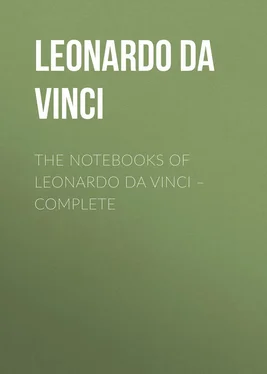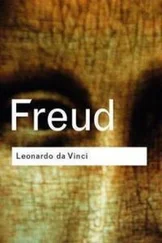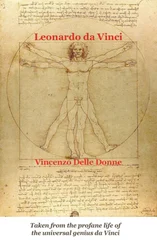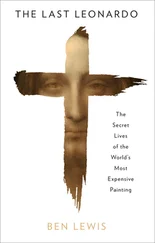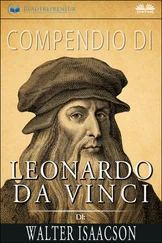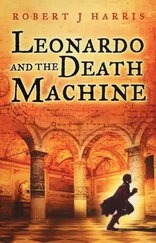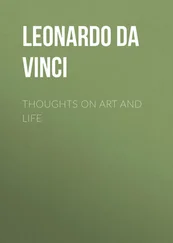Leonardo da Vinci - The Notebooks of Leonardo Da Vinci. Complete
Здесь есть возможность читать онлайн «Leonardo da Vinci - The Notebooks of Leonardo Da Vinci. Complete» — ознакомительный отрывок электронной книги совершенно бесплатно, а после прочтения отрывка купить полную версию. В некоторых случаях можно слушать аудио, скачать через торрент в формате fb2 и присутствует краткое содержание. Жанр: foreign_prose, foreign_home, visual_arts, foreign_antique, на английском языке. Описание произведения, (предисловие) а так же отзывы посетителей доступны на портале библиотеки ЛибКат.
- Название:The Notebooks of Leonardo Da Vinci. Complete
- Автор:
- Жанр:
- Год:неизвестен
- ISBN:нет данных
- Рейтинг книги:3 / 5. Голосов: 1
-
Избранное:Добавить в избранное
- Отзывы:
-
Ваша оценка:
- 60
- 1
- 2
- 3
- 4
- 5
The Notebooks of Leonardo Da Vinci. Complete: краткое содержание, описание и аннотация
Предлагаем к чтению аннотацию, описание, краткое содержание или предисловие (зависит от того, что написал сам автор книги «The Notebooks of Leonardo Da Vinci. Complete»). Если вы не нашли необходимую информацию о книге — напишите в комментариях, мы постараемся отыскать её.
The Notebooks of Leonardo Da Vinci. Complete — читать онлайн ознакомительный отрывок
Ниже представлен текст книги, разбитый по страницам. Система сохранения места последней прочитанной страницы, позволяет с удобством читать онлайн бесплатно книгу «The Notebooks of Leonardo Da Vinci. Complete», без необходимости каждый раз заново искать на чём Вы остановились. Поставьте закладку, и сможете в любой момент перейти на страницу, на которой закончили чтение.
Интервал:
Закладка:
Necessity of theoretical knowledge (19. 20).
19
OF THE MISTAKES MADE BY THOSE WHO PRACTISE WITHOUT KNOWLEDGE.
Those who are in love with practice without knowledge are like the sailor who gets into a ship without rudder or compass and who never can be certain whether he is going. Practice must always be founded on sound theory, and to this Perspective is the guide and the gateway; and without this nothing can be done well in the matter of drawing.
20
The painter who draws merely by practice and by eye, without any reason, is like a mirror which copies every thing placed in front of it without being conscious of their existence.
The function of the eye (21-23).
21
INTRODUCTION TO PERSPECTIVE:—THAT IS OF THE FUNCTION OF THE EYE.
Behold here O reader! a thing concerning which we cannot trust our forefathers, the ancients, who tried to define what the Soul and Life are—which are beyond proof, whereas those things, which can at any time be clearly known and proved by experience, remained for many ages unknown or falsely understood. The eye, whose function we so certainly know by experience, has, down to my own time, been defined by an infinite number of authors as one thing; but I find, by experience, that it is quite another. [Footnote 13: Compare the note to No. 70.]
[Footnote: In section 13 we already find it indicated that the study of Perspective and of Optics is to be based on that of the functions of the eye. Leonardo also refers to the science of the eye, in his astronomical researches, for instance in MS. F 25b ' Ordine del provare la terra essere una stella: Imprima difinisce l'occhio' , &c. Compare also MS. E 15b and F 60b. The principles of astronomical perspective.]
22
Here [in the eye] forms, here colours, here the character of every part of the universe are concentrated to a point; and that point is so marvellous a thing … Oh! marvellous, O stupendous Necessity—by thy laws thou dost compel every effect to be the direct result of its cause, by the shortest path. These [indeed] are miracles;…
In so small a space it can be reproduced and rearranged in its whole expanse. Describe in your anatomy what proportion there is between the diameters of all the images in the eye and the distance from them of the crystalline lens.
23
OF THE 10 ATTRIBUTES OF THE EYE, ALL CONCERNED IN PAINTING.
Painting is concerned with all the 10 attributes of sight; which are:—Darkness, Light, Solidity and Colour, Form and Position, Distance and Propinquity, Motion and Rest. This little work of mine will be a tissue [of the studies] of these attributes, reminding the painter of the rules and methods by which he should use his art to imitate all the works of Nature which adorn the world.
24
ON PAINTING.
Variability of the eye.
1st. The pupil of the eye contracts, in proportion to the increase of light which is reflected in it. 2nd. The pupil of the eye expands in proportion to the diminution in the day light, or any other light, that is reflected in it. 3rd. [Footnote: 8. The subject of this third proposition we find fully discussed in MS. G. 44a.]. The eye perceives and recognises the objects of its vision with greater intensity in proportion as the pupil is more widely dilated; and this can be proved by the case of nocturnal animals, such as cats, and certain birds—as the owl and others—in which the pupil varies in a high degree from large to small, &c., when in the dark or in the light. 4th. The eye [out of doors] in an illuminated atmosphere sees darkness behind the windows of houses which [nevertheless] are light. 5th. All colours when placed in the shade appear of an equal degree of darkness, among themselves. 6th. But all colours when placed in a full light, never vary from their true and essential hue.
25
OF THE EYE.
Focus of sight.
If the eye is required to look at an object placed too near to it, it cannot judge of it well—as happens to a man who tries to see the tip of his nose. Hence, as a general rule, Nature teaches us that an object can never be seen perfectly unless the space between it and the eye is equal, at least, to the length of the face.
Differences of perception by one eye and by both eyes (26-29).
26
OF THE EYE.
When both eyes direct the pyramid of sight to an object, that object becomes clearly seen and comprehended by the eyes.
27
Objects seen by one and the same eye appear sometimes large, and sometimes small.
28
The motion of a spectator who sees an object at rest often makes it seem as though the object at rest had acquired the motion of the moving body, while the moving person appears to be at rest.
ON PAINTING.
Objects in relief, when seen from a short distance with one eye, look like a perfect picture. If you look with the eye a , b at the spot c , this point c will appear to be at d , f , and if you look at it with the eye g , h will appear to be at m . A picture can never contain in itself both aspects.
29
Let the object in relief t be seen by both eyes; if you will look at the object with the right eye m , keeping the left eye n shut, the object will appear, or fill up the space, at a ; and if you shut the right eye and open the left, the object (will occupy the) space b ; and if you open both eyes, the object will no longer appear at a or b , but at e , r , f . Why will not a picture seen by both eyes produce the effect of relief, as [real] relief does when seen by both eyes; and why should a picture seen with one eye give the same effect of relief as real relief would under the same conditions of light and shade?
[Footnote: In the sketch, m is the left eye and n the right, while the text reverses this lettering. We must therefore suppose that the face in which the eyes m and n are placed is opposite to the spectator.]
30
The comparative size of the image depends on the amount of light (30-39).
The eye will hold and retain in itself the image of a luminous body better than that of a shaded object. The reason is that the eye is in itself perfectly dark and since two things that are alike cannot be distinguished, therefore the night, and other dark objects cannot be seen or recognised by the eye. Light is totally contrary and gives more distinctness, and counteracts and differs from the usual darkness of the eye, hence it leaves the impression of its image.
31
Every object we see will appear larger at midnight than at midday, and larger in the morning than at midday.
This happens because the pupil of the eye is much smaller at midday than at any other time.
32
The pupil which is largest will see objects the largest. This is evident when we look at luminous bodies, and particularly at those in the sky. When the eye comes out of darkness and suddenly looks up at these bodies, they at first appear larger and then diminish; and if you were to look at those bodies through a small opening, you would see them smaller still, because a smaller part of the pupil would exercise its function.
[Footnote: 9. buso in the Lomb. dialect is the same as buco .]
33
Интервал:
Закладка:
Похожие книги на «The Notebooks of Leonardo Da Vinci. Complete»
Представляем Вашему вниманию похожие книги на «The Notebooks of Leonardo Da Vinci. Complete» списком для выбора. Мы отобрали схожую по названию и смыслу литературу в надежде предоставить читателям больше вариантов отыскать новые, интересные, ещё непрочитанные произведения.
Обсуждение, отзывы о книге «The Notebooks of Leonardo Da Vinci. Complete» и просто собственные мнения читателей. Оставьте ваши комментарии, напишите, что Вы думаете о произведении, его смысле или главных героях. Укажите что конкретно понравилось, а что нет, и почему Вы так считаете.
